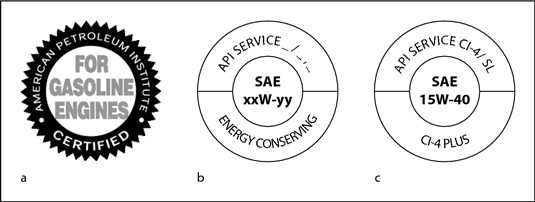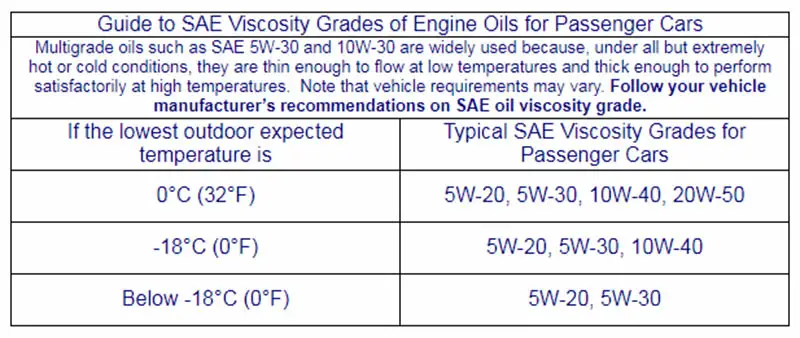What’s the most important part of your engine? The motor oil. Most people take their oil for granted, not understanding the scope of its function in their engine.
The assumption is that oil is just for lubricating, but running your car or truck or boat with this assumption may not be the best thing in the long run.
Table of Contents
- Types of Motor Oil (Understand the Labels)
- What’s The Best Grade of Oil – Low Viscosity vs High Viscosity
- The Importance of Oil Changes
- My Oil is Dark. Doesn’t It Need Changing?
- Do You Need to Change Your Filter Every Time?
- Change Your Own Oil Vs a Quick Lube Service?
- What You Need to Know About Synthetic Oil
- Engine Sludge
If you really understand what oil does, what it’s designed to do, and why it’s important to take care of it in your vehicle, you can go a long way toward maximizing the life and health of the investment you have in your vehicle or boat.
We’re going to talk about oil from a number of different perspectives, mostly from the perspective of the oil’s health – what keeps it healthy and what happens when the oil loses its ability to do what it’s supposed to do. So let’s get started!
Types of Motor Oil (Understand the Labels)
Reading the types of motor oil can confuse anyone who comes out a bottle of oil with strange jargon on it like, SAE, API, 10W-30. These terms don’t turn out to be so confusing once they know what they are.
SAE – This stands for Society of Automotive Engineers and is the group who have established the classifying categories for the viscosity of the different types of motor oil. Having ‘SAE’ on the bottle simply means the oil has been classified according to the industry standard rating scale made by the SAE. Which is pretty much all of the oils on the market.
API – This stands for American Petroleum Institute, which is the group that sets the minimum performance standards for different classes of oil different classes of oil.

SAE-30W oil vs. 10W-30 – This is an example of two types of oil that can be compared for illustrative purposes. The first one is known as a single-grade oil while the second is a multi-grade oil. The W in both instances stands for ‘winter grade’.The 10 and the 30 are weights of oil – measurements of the viscosity of the oil. Smaller numbers mean lower viscosity and lighter weights of oil. An SAE-30W is a 30 weight oil.
An oil that is 10W-30 is an oil whose viscosity actually changes between cold and hot temperatures, due to special viscosity modifying additives in its formulation. The most typical viscosity grades given are from 0 to 60, though you won’t find a single-grade winter motor oil above 25.
API SJ – sometimes you will see this kind of designation on the motor oil. This is known as a “service category”. The SJ or other two-letter identifier is a rating class which means the oil is suitable for the needs of a given class of vehicles. For gas-powered cars and light trucks, you can have SN, SM, SL, and SJ service categories. Diesel engines have service categories starting with C – like CJ and CI. The easy way to distinguish is that the S means “spark ignition” (gas-powered) and the C stands for “Compression” (diesel).
You may see other acronyms as well, such as the ILSAC (International Lubricant Standardization and Approval Committee or JASO (Japanese Automotive Standards Organization) or ACEA (a European/French acronym). These are additional rating organizations from around the world which offer their own classifications for types of motor oil.
Given all these kinds of confusing names, which ones do you need to pay attention so?
The most important one is the SAE grade of the oil and the API class. Just consult your owner’s manual to find out which grades and classes of oil are recommended for your vehicle.
What’s The Best Grade of Oil – Low Viscosity vs High Viscosity

You may know that the weight of the oil weight of the oil you use can impact your fuel mileage. So what’s the best weight to use for your vehicle?
It’s always a good idea to consult your owner’s manual for the type of oil that’s best in your engine. With all the choices out there, how do you know what weight of oil to use, or if it even matters? The answer to this may lie in the time of year.
As a general rule, assuming the oil’s weight falls within the range recommended in the owner’s manual, you’ll get the best protection in the summer when you use a slightly thicker grade of oil, such as a 10W30 instead of a 5W30.
Engines need a thicker oil in the summer months because of the summer heat and its effects on thinning the oil out. When the weather cools down, you can switch back to a lighter, thinner oil, which will help preserve gas mileage in the winter months.
The Importance of Oil Changes
Talk to an “old timer” about cars and you’ll inevitably hear about how important it is to change your oil regularly. You know they’re right. Regular oil changes are the single best thing you can do for the life of the engine. And that means the life of your car, too.
Because many drivers take their oil for granted (because they don’t see it every day), they come to view oil changes as a hassle and an expense. If you’re not paying a quick lube or the dealership to change it (more on that later), you’re buying the oil and filters and getting a little dirty to change it yourself. And so the essential oil changes get dropped down on the priority ladder in our lives. We have other things we need to spend money on. Winter will soon be over and that means gas prices will be going up. The summer driving season is expensive with the higher price of gas per gallon. Families start taking their vacations and spending more money on gas and other things. They’re certainly not thinking about oil changes.
Let’s repeat this again for emphasis: Regular oil changes are essential to getting the most life out of your vehicle.
That being said, you don’t want to have to spend more on oil changes in the summer if you don’t have to.
So here are some guidelines to help you maximize the benefit from your oil changes in the summer while preserving the contents of your wallet and your bank account.
Three Months or 3,000 Miles?
That’s what has been preached to us over the years – 3,000 miles per oil change. But it turns out that you may be wasting money if you follow this advice.
The repeated advice to change oil every 3000 miles stems from the oil change industry seeking to boost its revenue. They market it as “cheap insurance” – what can it hurt to change your oil a little more often? In most cases, it can’t hurt to do that. It will just cost you more money than you really need to spend.
For how often to change the oil, it’s always a good idea to follow the recommendations of your vehicle owner’s manual. Most owner’s manuals specify six months and between five to seven thousand miles per change, a little sooner if you drive under “severe conditions”.
All bottled oils come with additive packages already included from the refinery. These additives aim to protect the engine surfaces in different ways. You have acid neutralizing additives to help to neutralize the acids that build up during use.
There are dispersants that capture harmful dirt and soot particles to keep them from scratching metal surfaces. There are “extreme pressure” additive (like ZDDP) that increase the film strength of the oil, as well as viscosity modifiers to preserve the viscosity of the oil for longer periods of time.
Many of these additives are actually used up within the first 500 to 1,000 miles of use. Beyond that, it’s just a matter of how long you allow the acids and particles to accumulate in the oil before changing it.
For all intents and purposes, there’s little functional difference between an oil at 3,000 miles and at 5,000 miles. So you may be wasting money if you’re changing the oil at 3,000 miles. There is a reason the owner’s manual recommends 5,000 – 7,000 and not any sooner.
So you can feel confident in following these guidelines. Do pay attention, however, to the proviso in your manual about severe driving conditions. If you qualify for driving under severe conditions, the owner’s manual probably will tell you to change it more often. And that’s certainly advice you need to follow just as well. More on that a little later.
One caveat though – there actually are a handful of vehicles that do say 3,000 miles. One example is the Saturn S Series. Even though Saturns aren’t really made anymore, there are some still on the road. And in those vehicles, the length of oil change interval is tied to the oil functioning as hydraulic fluid for the timing chain tensioner. So Saturn would recommend an oil change every 3,000 miles. But for most vehicles today, you don’t need to change it that often.
Severe Driving Conditions
In consulting the vehicle owner’s manual, you’ll likely see that most cars and light trucks will have a range recommendation in the manual, for example, 5,000 – 7,000 miles unless you drive regularly in severe conditions.
Severe conditions. There’s the kicker. If you drive in severe conditions, or what the manual calls “severe service conditions”, your vehicle manufacturer does recommend that you change the oil more often.
So how do you know if you operate under severe conditions and need “severe service”?
The Hallmarks of Severe Driving Conditions
Ask any mechanic and they will tell you the ‘severe driving conditions’ includes one or more of the following:
- Dusty or muddy areas
- Very hot areas
- Hotter environments break the oil down faster because heat accelerates the chemical reactions in the oil that lead to oxidation, breakdown and sludge formation.
- Short trips in cold weather
Believe it or not, even cold weather can be considered severe if you only operate the vehicle for short periods of time. In between trips, moisture will condense in the oil from the environment around it. When the cars start back up, an engine needs time during use to warm up and burn off the moisture built up in the oil from the night (or day) before. Short trips do not allow for this and more moisture stays trapped in the oil for longer periods of time. Water in the oil leads to the hydrolysis reaction and a faster breakdown of the oil over time.
Towing or using a car top carrier
These additional pieces of equipment make the engine work harder and put more stress on the engine oil. Many of us drive regularly under one or more of these conditions. If you qualify as one of us, you need to pay closer attention to how often you change your oil.
Instead of going 5,000 miles per change, you may indeed need to change it closer to 4,000 or even 3,000 miles. Just depends on what the manual says.
My Oil is Dark. Doesn’t It Need Changing?
Many oils turn dark before they need to be changed. As noted before, one function of the oil is to take minute soot particles and other impurities and suspend them, away from metal surfaces where they could otherwise cause damage.
It is the dispersant additives in the oil that accomplish this essential task. These dispersed particles are what make the oil darker. If you were to leave the oil change for too long, eventually the oil would lose its ability to suspend these particles (as the dispersant additive is depleted), and then you would have a problem.
But simply having dark oil isn’t a sign that the oil needs to be changed at that time.
Do You Need to Change Your Filter Every Time?
In times past, manufacturers would recommend that you did not need to change your oil filter every time you changed the oil itself. This was because they used non-detergent oils. Oils without detergent would leave all the oil sludge in the engine, so the oil filter last longer.
Today most oils contain detergents and you need to change the oil filter with each oil change.
Change Your Own Oil Vs a Quick Lube Service?
So far we’ve talked the importance of regular oil changes, the definitions of severe service and the pros and cons of synthetic oil.
Even as vehicles have gotten more sophisticated in the last 20 years, there’s still one piece of important maintenance that almost anyone can still do: the oil change. But changing your oil can be a little dirty, which leads many people, women, and men, to pay for the convenience of the services provided by their local “quick lube” establishment.
These quick oil change places offer the convenience of drive-in service that many busy people like. While changing the oil, the staff will also inspect certain areas of the vehicle and make recommendations for types of service at given intervals, many of which they can offer to fulfill in-house for a price.
It’s an unfortunate rule in life that the best way to make sure something is done right is to do it yourself. In this case, the consumer may not be in a position to do that, and so are at the mercy of some business practices and quirks that can give quick lube places a bad name.
These are some things you might want to be aware of and to watch out for!!!
Using The Wrong Kind of Oil
To prevent sludge buildup, you always want to use a detergent, multi-weight oil like 5W30. SAE30 oil is inexpensive, so many places buy it in bulk and pass it along to the customers. But SAE30 oil is not a multi-weight oil but is classified as single weight or single-grade.
No auto manufacturer recommends a single-grade oil in their vehicles. So make sure they are putting the right kind and grade of oil into your vehicle.
Selling Overpriced Cheap Parts for Non-Oil Related Maintenance
It’s easy to get caught up when the lube place starts asking if you want all the extra services done that they offer, such as wiper blades, PCV valves, and thermostats.
Quick lube places need to turn a profit and they do so by charging too much for these pieces while installing the cheapest ones they can purchase.
A rule of thumb is to never use a quick lube place to do anything extra beyond the simple oil change. Leave the other maintenance procedures to a mechanic or dealership that you already trust. You know those places will have the level of training and skill to do the best job possible on your vehicle.
Overpriced Engine Flushes
Engine flushes to remove sludge are a high-profit item for many quick lube places. Beyond preventing its formation through regular oil changes the best thing for you to do to remove engine sludge is change your oil yourself and use an engine flush product before you change your oil.
But if part of the point is that you can’t change the oil yourself, take your vehicle to your properly-licensed mechanic for any such work. They are less likely to overcharge you and more likely to do it right.
Poor Quality Oil Filters
This is another case where doing it yourself ensures you know the quality of what’s going into the job. To preserve their profit margins, quick oil facilities will purchase the least expensive oil filters for the lowest price they can. Probably not the level of quality of filter you would choose if you were making the purchase for your vehicle.
Adding The Wrong Fluids
People who have been burned by quick lube places will advise to never let them add any fluids other than the oil.
This includes brake fluid, transmission fluid, and power steering fluids. The reason behind this is that there’s always a certain rate of error due to the nature of the business and the training of the staff.
While quick oil change establishments are supposed to have a certain protocol for checks of procedures, it’s also true that these places don’t offer the same level of training that your mechanic goes through.
It becomes easier to add the wrong kind of fluid and that can cause expensive damage to the vehicle.
What You Need to Know About Synthetic Oil
The automakers of many newer vehicles are recommending a use of synthetic oils in those vehicles. But synthetic oils cost more, which leads consumers to question their value. They ask “do I need to spend $20 more per oil change or can I get away with just paying price?”
Why are synthetic oils being recommended and are they worth the cost? Let’s investigate.
What is Synthetic Oil?
The first synthetic oil approved for use in regular cars and trucks was made in 1972. Synthetic oils are lubricants made of chemical compounds that have been artificially made instead of naturally formed. Naturally-formed compounds are simply oil that comes out of the ground – Mother Nature formed it over time form the dead bodies and organic matter of plants and animals over millennium’s past. Artificially-made simply means a chemist produced them as an end product of some chemical reactions in a laboratory.
There is a wide range of “base stocks” that can be made in this manner, by taking petroleum building blocks and “synthesizing” high-quality base oils from those. Thus, chemists in the petroleum industry can make many types of synthetic base oils.
What’s Good About Synthetic Oils?
Generally speaking, synthetic oils are better quality than conventional motor oils because, by creating them in a manufacturing process, their quality can be controlled and streamlined or refined much more so than making oil from whatever nature has created under the ground.
Synthetic oils can be tailored for a specific need in whatever class of vehicle they’re being used in. The molecules are all the same size and shape, and this enables the synthetic oil to withstand the extreme conditions of the engine better for longer periods of time.
Furthermore, synthetic oils tend to have better high- and low-end viscosity performance in very hot and very cold weather.
They are more resistant to wear and breakdown by oxidation (because they’re engineered to be so) and some synthetic oils can also improve fuel economy. Finally, synthetics are more resistant to sludge formation because of this resistant property to oxidation and they disperse sludge particles at least as well as regular oil.
So all in all, synthetic oils could be called lube oil on steroids, in that they have certain inherent qualities.
What’s Bad About Synthetic Oils, If Anything?
The biggest downside to using synthetic oil is the cost difference with regular oil. An oil change with synthetic oil will run about $20 more than an oil change with conventional oil. An oil change at Jiffy Lube that might normally run $30-35 could cost $50-60 if you choose a full synthetic oil change.
But sometimes you get what you pay for. Since synthetic oils have all of those advantages we talked about previously, it comes down to a personal choice whether you want to lay out the extra cash.
Any other negatives of synthetics tend to be minor issues, such as you can’t use them in rotary engines (like Mazda). These types of engines have less friction so you can’t use them in the break-in period of a new engine.
Synthetics Are Great But Watch Out for Overselling Their Claims
Some companies and proponents of fully synthetic oils claim substantial benefits for better mileage and performance. There have been independent tests run by reputable test facilities which have shown that synthetic oil gives you a little better gain in horsepower and mileage than conventional oils do. But while the gain is measurable, one must be careful not to oversell these more marginal benefits.
Compatibility with Other Oils
Detractors of synthetic oils have argued in the past that they aren’t compatible with conventional oils. This has been shown in field experience not to be true. Today’s synthetic oils are fully compatible with conventional oils. Synthetics are also completely compatible with most oil
treatments.
The Bottom Line About Synthetic Oil
If your owner’s manual specifies synthetic oil for your vehicle, that’s what you need to go with. If it does not, then it’s up to you if you want to cover the extra expense for the extra benefits. Some people do, some people do not.
Engine Sludge
If you are one of the unwise ones who stretches your oil change intervals, then it may be time to look at the issue of “engine oil sludge” – what it is and, more importantly, whether you should be concerned about it in your engine. There’s a lot to be said on the issue, but consider this at least a basic primer on this important automotive issue.
If you’ve ever taken your car or truck to one of those quick-lube oil change establishments, then no doubt at some point they’ve offered some kind of treatment to remove “engine oil sludge”. They start your oil change service, drain the oil and then come around with your oil dipstick and a little dab or smear of what looks like dark brown goo on the end of the stick.
They diagnose that you have “engine sludge” and advise that they have just the treatment for it, for an extra $30.00 (or $40.00 or whatever the going rate is at the time).
Before plunking down the extra cash to fix this new problem, maybe it’s best to find out what they’re talking about. So let’s dive in.
What is the “Engine Oil Sludge”?
Simply put, engine oil sludge is a combination of oxidized oil and contaminants that have settled and been dispersed onto engine surfaces.
Engines have changed over the years, becoming more efficient and less polluting while lasting longer. The oils for these engines have changed with the times, too. Modern vehicles call for “multi-weight oils” that can handle the higher RPMs and tougher conditions that modern engines are built for. These modern oils also have more additives and detergents in them to suspend soot particles and maintain the oil’s viscosity over longer periods of time.
The end result that people are able to wait longer to change their oil and they often do. This is when engine sludge starts to factor in. Engine sludge forms when you don’t change your oil often enough.
Engine oil sludge first started becoming a more noticeable problem about the same time Federal standards for fuel economy changed in the mid-1990s. Auto manufacturers responded to these tougher standards by engineering the kinds of engines we were just talking about. The operating temperatures in the engines became hotter, which causes the oil to break down faster than before.
Other changes included the increasing popularity of lower-viscosity oils. These oils give better fuel economy than heavier oils, but the trade-off is that they break down faster than heavier oil. Also, extended-life antifreeze became more common in use, leading more people to neglect their cooling systems. These play a part in the picture because worn-out antifreeze not only performs poorly and raises the engine temperature, but it also takes on an electrical charge that acts like acid on engine parts.
How Do I Prevent Oil Sludge Formation?
The single best way to prevent oil sludge formation is… wait for it… by changing your oil on a regular basis within the recommended time in your vehicle owner’s manual.
Keep in mind that this doesn’t mean you have to change it every 3000 miles; most automakers recommend 5000 – 7500 miles. The problem is that many drivers forget about their oil and don’t even get it done by 7,500 miles, much less 5,000 or 3,000. If you regularly neglect these guidelines and stretch your oil change intervals further and further oil, that’s when you can look for trouble. The more often you exceed these recommendations, the greater chance you have of developing oil sludge. And there is a cumulative effect as well.
Waiting for 12,000 miles for an oil change and doing that two times may cause as much or more damage as changing your oil after 8,000 five or six times.
Changing your oil prevents oil sludge formation because it removes the oxidative particles that have started to form in your engine oil. It also refreshes the protective additive package in the oil, which further serves to keep sludge precursors from forming.
So with respect to preventing this terrible thing called engine sludge, the bottom line is that if you are careful to change your oil as often as you are supposed to, you’ll be okay. If you don’t, then you’re asking to trouble. And you never know when trouble is going to find you at an inconvenient time.
Conclusion – Keeping Your Oil Healthy
The most important point that you should have reaped from this article is the importance of regularly changing your oil. While you may not need to change your oil every 3,000 miles (unless you drive in severe conditions), making sure that you consult your vehicle owner’s manual for the right oil change interval and the right type of oil to be used will go further than anything else you can do to keep your engine healthy and performing for the longest life possible.
We put this article together to educate consumers on some of the important aspects of lubricating oil health for vehicles and engines.
I would encourage interested readers to check out Bell Performance, makers of Ethanol Defense treatment for ethanol fuels and Dee-Zol treatment for diesel fuels, as well as X-tra Lube oil treatment for resurfacing engine metal surfaces and reducing friction and wear.
References
Firestone Complete Autocare
https://www.castrol.com/en_gb/united-kingdom/car-engine-oil/engine-oil-viscosity.html
https://support.shell.com/hc/en-gb/articles/115002987692-How-do-I-choose-the-right-engine-oil-




